Brora Village Trail
A break from the bilingual articles this month, as this would be far too long if I did in in Gaelic too. After last month’s front page about a Seaboard lad becoming manager of Brora Rangers, and the many Seaboard connections to the team, I thought a recent guided walk of Brora that I went on might be of interest, and maybe something for visitors to do themselves while up there for a match.
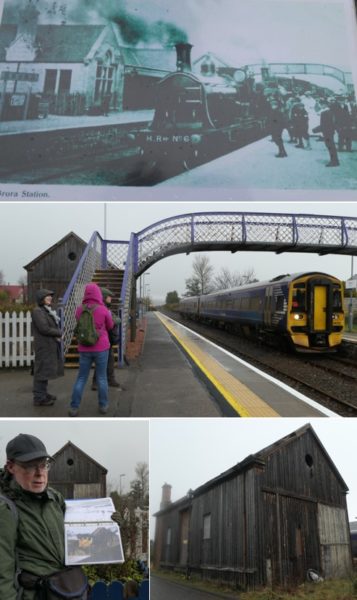
The walk was led by Nick Lindsay, chair of the Clynelish Heritage Society. The station was our first point as it was very significant in Brora’s history, particularly for freight transport. Brora was an early industrial centre in the Highlands, its geology providing not just brick-clay and good Clynelish sandstone, but coal too, and the railway, reaching Brora in 1871, enabled much greater efficiency in transport than the small harbour at the mouth of the river. The same applied to Brora’s other products, especially tweed (from the woollen mill after 1901), bricks, salmon, and whisky. The bottom pictures show the original goods shed. The railway also brought an influx of visitors eager to enjoy gentlemanly pursuits like hunting and fishing, or just for the fresh air, sea and sand, and all this led to something of a boom for Brora, and swift expansion, very much in line with the policies of the Sutherland Estate (whose signature “S” is on lots of buildings). Electricity also reached Brora first in the Highlands , leading to the name “Electric City”.
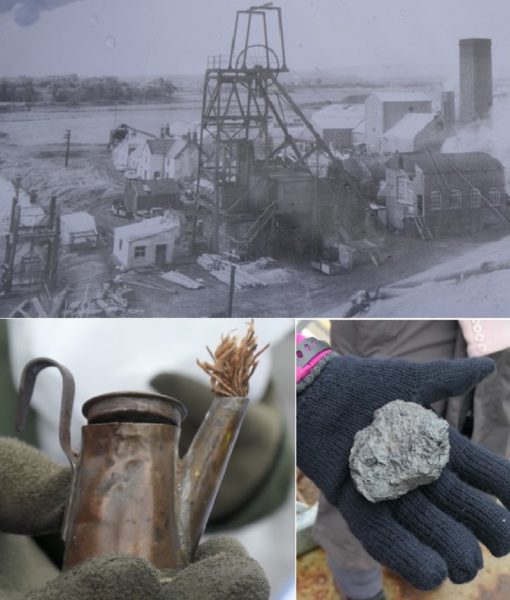
Coal has been a constant presence in Brora for centuries, first mentioned in 1529, and was initially collected from the shore and the river, then mined there. It’s Jurassic coal and much younger than the other carboniferous coal mined in Britain. It’s not as reliable in quality and sparks a lot, which made it cheaper, and it was perfect for fuelling the burgeoning industries once it was mined more deeply, first by the sea, then further inshore. Working conditions were very bad in the earlier days, with little regard for worker safety, and many accidents.
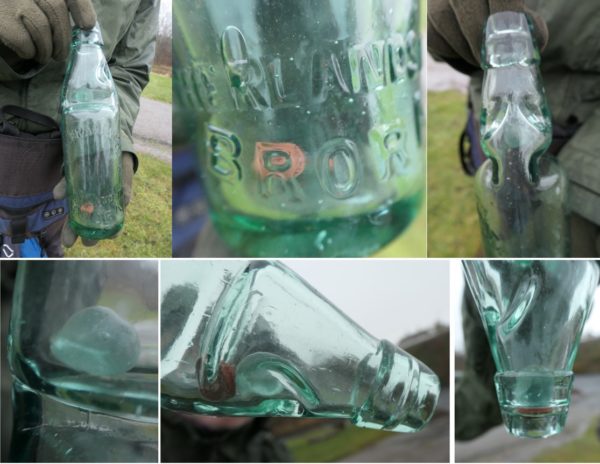
Nowadays we associate Brora with the Clynelish distillery, but Brora was famous for another kind of drink too – aerated water, or lemonade, produced from 1905 in a former brewery by the harbour (itself from 1817, built by Lady Stafford to try to wean the workers off whisky onto beer). This is a rare complete example of a Codd bottle, invented in the 1870s, whereby a marble kept the seal tight and the gas in. They were often broken by children to get the marbles, so this is a great find from Brora shore!
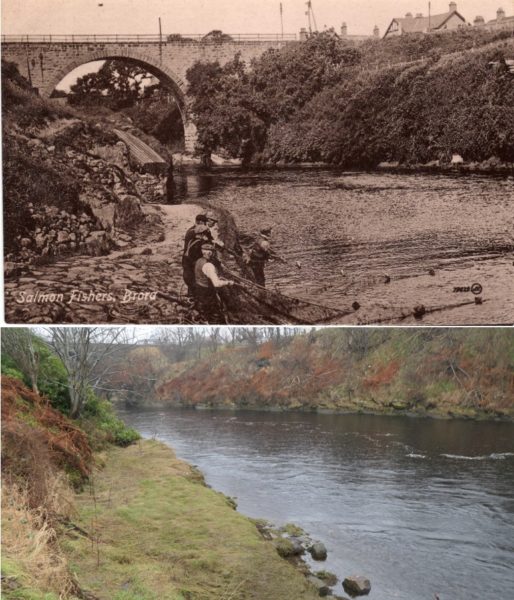
We passed the spot by the mouth of the River Brora where salmon-netting was once a busy and lucrative trade, as around the Seaboard too.

Brora Harbour is at the mouth of river separated from the main stream by a peninsula, formerly an island. It was used for exporting coal, bricks, salt, fish etc until the railway came – wooden tracks for horse-drawn wagons were built through the town to it. But it was also a fishing port, though not on the scale of the larger, deeper harbours along the coast. It tended to silt up, so ultimately an opening was made through the back wall to the river to help keep it clear (see bottom picture).
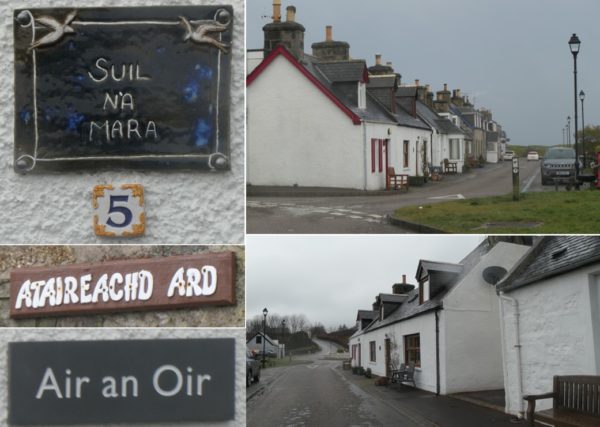
Lower Brora was the fishertown, with the traditional low cottages housing very large families. This was definitely a Gaelic-speaking part of town, unlike the more gentrified (or aspiring) upper areas, which had more incomers. The harbour-master’s house dated 1775 is also still there – compete with working barometer in the wall.
Sadly, from my heritage-loving point of view , the tarry old fishermen’s sheds have almost all been replaced by variations on beach huts, as so often elswhere along our coasts. We really need to preseve the ones that are left – you don’t know what you’ve got till it’s gone! The ice-house (a relic of the herring boom, as well as the salmon) is at least still there – though allegedly also for sale…

It’s also by the shore that Nick tells us about Brora’s other traditional industry – salt-panning, first recorded in 1598. This was big business over the centuries, as it was the main way to preserve food, especially meat and fish. The pans were of course fuelled by Brora coal. Remains of one of them can still (just) be seen a little up the coast, and the Heritage Centre also holds salt-making sessions again using traditional methods.
There’s something else by the shore, but from a much more modern era – this building was a World War II and Cold War government listening station from 1939 till 1986. The workers were brought in from down south and sworn to secrecy, though some stayed on and married ,locally – but never shared the secrets! It’s now more mundanely part of the Seabreezes Carvan park.
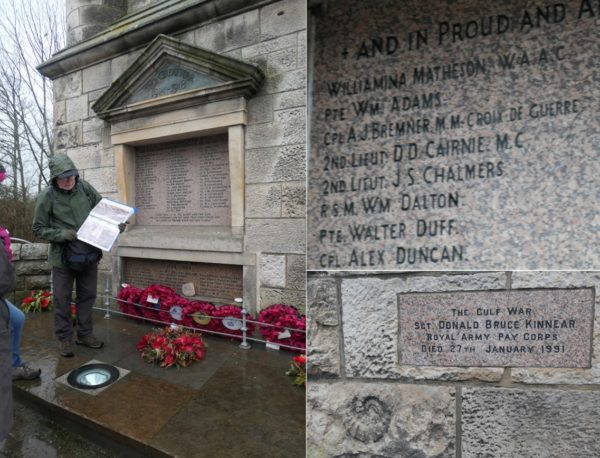
The war memorial in the centre of Brora is also worth a closer look. Built of Clynelish sandstone, i’s over 50 feet high and also serves as the clock-tower. It was built by public subscription in 1922 to commemorate the fallen of the Great War, and was opened by a Mrs Matheson who tragically lost a daughter, two sons and a son-in-law in the war. The daughter’s name is the first on the plaque. The names are otherwise listed alphabetically, not by rank, so another unusual feature. Later war dead have also been commemorated, from WWII and the Gulf War. Note the fossil too – lots of these around in walls.
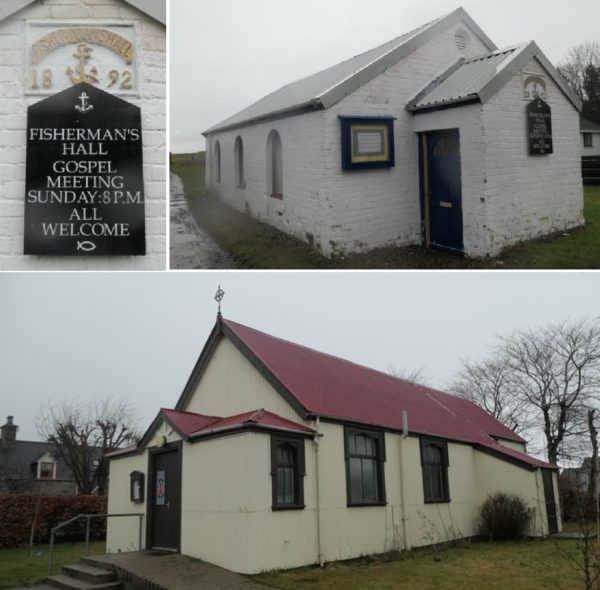
Brora’s well-served with religious buildings, but I’ll just mention two of my favourites – Fisherman’s Hall, built in 1892 in white-painted brick, serving the generally very God-fearing fishing community. There’s a Temperance Hall from the same era nearby too – now a community hall. . My other favourite is the “tin tabernacle” dated 1909, still housing the Scottish Episcopal Church of St Columba. One of the original flatpack corrugated-iron and wood churches, they came up to the Highlands of course by railway from manufacturers in Glasgow and elsewhere.This one actually served the Episcopal community in Tain from 1880, until they could afford to build the current stone church (St Andrew’s).
There’s lots more history and stories I could mention – the brickworks beside the coalmine, Hunter’s woollen mill(s), the distilleries, and lots of fascinating tales Nick told us about Olympic divers, mail-coach mishaps, emigration sagas, Royal visits etc etc, but for that you’ll need to get on another of his walks – highly recommended! There’s also a very good illustrated booklet for the self-guided Brora Village Trail, available from the Heritage Centre. Follow them on Facebook too: https://www.facebook.com/clyneheritage